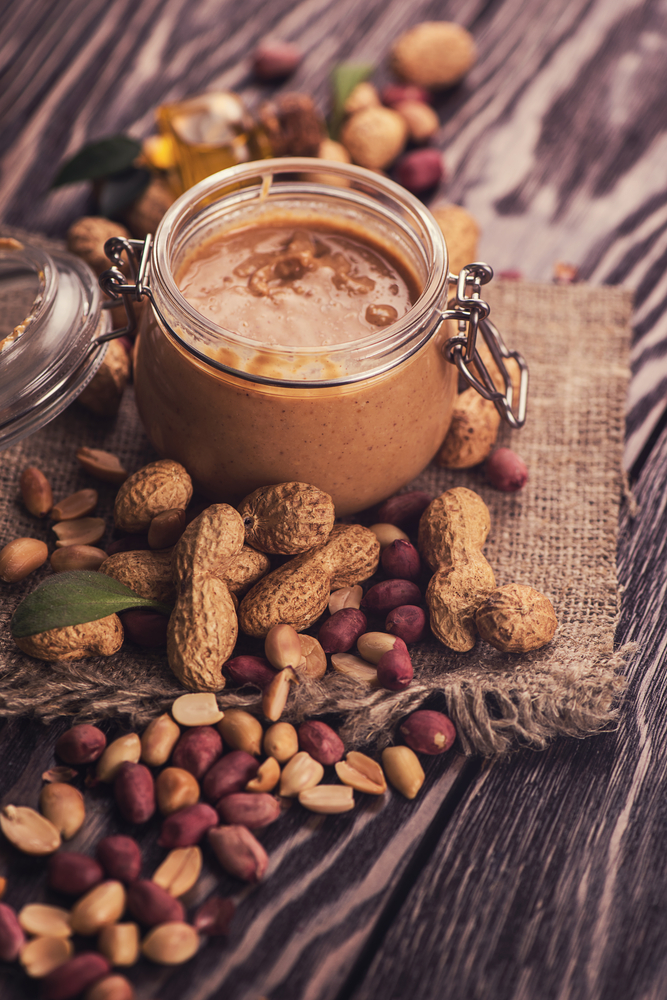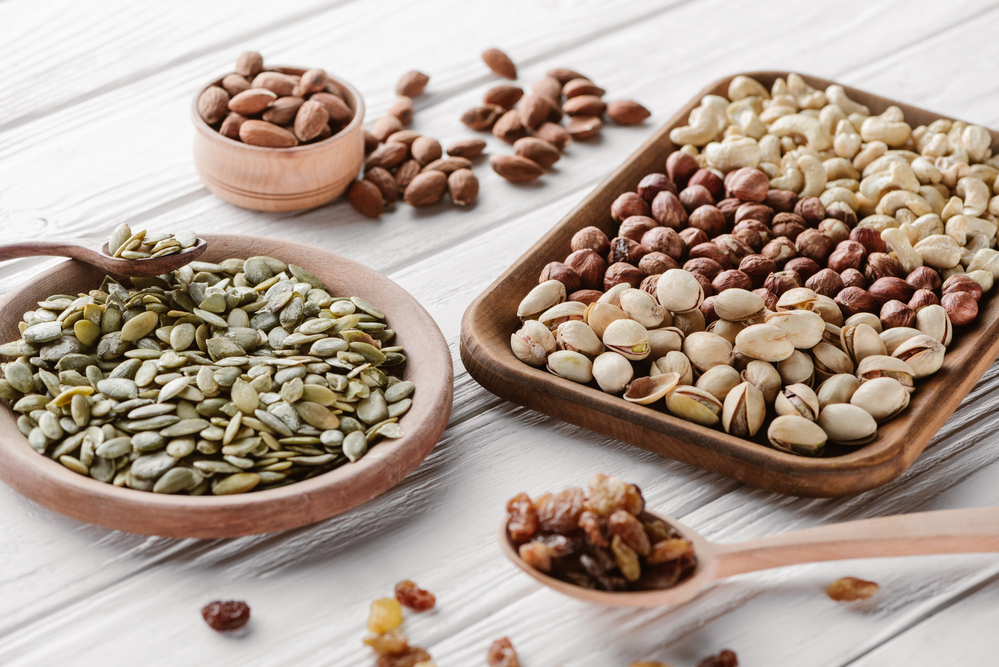Nuts have a reputation for being a good source of protein, which is true. Yet not much is said about their fat content. Nuts have a range of 2-9 times more fat to protein ratio, as you can see on the charts below. How much fat should one consume per day? If you are eating a 1,500 calorie diet, between 42-58 grams and if your are consuming 2,000 calories per day you will want to consume between 56 and 78 grams. Let’s take that one step further and look at how much would you need to eat per meal? On the low side of getting 42 grams and eating only 1,500 calories that would be 14 grams of per meal if your are only eating 3 times a day. On the other end it could be 26 grams per meal, excluding snacks, that is if you are eating a 2,000 calorie a day diet. Oh My! So many numbers. Yet these are the figures I keep coming back to ensure that I am getting enough of the much needed nutrients for our little bodies.

Below I have created 2 charts that show the macro nutrients of nuts butter and of seeds. Per the website avitahealth.org macros are:
Macros are macronutrients. Your body needs these nutrients in larger amounts in order to function properly as macro means large. In addition, all of these nutrients provide your body with energy measured in the form of calories or kcals. There are three types of macronutrients: carbohydrates, proteins, and fats.
Nut Butter Macros For 2 Tablespoons
| Nut Butters | FAT | PROTEIN | CARBS | CALORIES | RESOURCE |
| Almond | 18g | 6.8g | 6g | 196 | USDA |
| Cashew | 16g | 5.6g | 8.8g | 188 | USDA |
| Hazelnut | 11g | 2g | 23g | 200 | USDA |
| Macadamia | 18g | 2g | 6g | 180 | My Fitness Pal |
| Peanut | 16g | 8g | 6g | 188 | USDA |
| Pecans | 20g | 4g | 6g | 210 | My Fitness Pal |
| Pistachio | 14g | 7g | 9g | 190 | Fastachi |
| Walnut | 20g | 5g | 4g | 209 | Eat This Much |
SEED MACROS FOR 2 TABLESPOONS
| Seeds | FAT | PROTEIN | CARBS | CALORIES | RESOURCE |
| Chia Seeds | 9g | 4g | 12g | 139 | webmd |
| Flax Meal | 4.5g | 3g | 4g | 70 | Bob’S Red Mill Package Label |
| Flax Seeds (whole) | 8.6g | 3.8g | 6g | 170 | USDA |
| Hemp Seeds | 9.75g | 6.31g | 1.73g | 111 | USDA |
| Pumpkin Seeds | 2g | 2g | 4g | 36 | USDA |
| Sunflower Seeds | 10g | 4g | 4g | 102 | USDA |
| Sesame Seeds | 9g | 3.2g | 2.1g | 104 | USDA |
| Poppy Seeds | 7.4g | 3.2g | 5g | 92 | USDA |
Were you surprised by any of those numbers? I would love to hear your reaction the charts? Were you surprised by the fat content? I am now curious about granola and the fat and protein content with oats and nuts and seeds and sometimes nut butter, butter and oils used. Certainly eye opening.
Nuts and nut butters contain good fats. We will dive into that topic shortly, along with the other macros. I know that you have more questions regarding nuts/seeds and their nutrient content in their many forms. Please ask them below. More nutty topics are in the works. In the meantime I will leave you with this article that talks about the differences between nuts and nut butters and other questions on the topic.

Resources
- BerkleyWellness.com: 10 Questions About Nut Butters
- Healthline.com: The Top 9 Nuts To Eat For Better Health
- OnHealth.com: Healthy Seeds: 11 Edible Super Seeds For Better Nutrition
- epicurious.com: 11 Varieties and Types of Nuts
- Stack.com: Are KIND Bars Actually Healthy?
- WebMD.com: Why Are Hemp Seeds Good For Me?